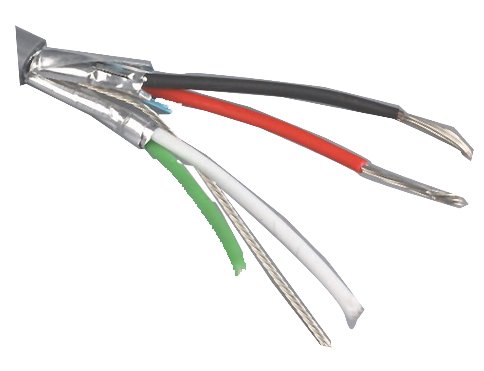|
|
This topic comprises 2 pages: 1 2
|
|
Author
|
Topic: 2 cores microphone cable
|
|
|
|
|
|
|
|
|
|
|
|
|
|
|
Marco Giustini
Film God
Posts: 2713
From: Reading, UK
Registered: Nov 2007
|
 posted 03-23-2012 03:42 PM
posted 03-23-2012 03:42 PM




Hi all,
Thanks for so many answers!
I am indeed in the UK David, not so far from Oxford!
Louis, 2 pairs under one jacket, I guess that a separate shield would avoid crosstalk, wouldn't it?
I do need a custom cable, I will probably need micro-XLR on one end. And the cable will be possibly 15-ish meters long. I am not a big fan of Maplin, they seem to sell overpriced stuff to me.
Scott's suggestion looks excellent, and there is a 'reduced size' version as well, with two pairs inside. But if I'm not mistaken the pairs are not independently shielded.
The size is crucial for my application. I need something small and robust at the same time. The cable won't be moved when being used. And it won't be abused.
Thanks everybody!
| IP: Logged
|
|
|
|
|
|
|
|
|
|
|
|
|
|
Randy Stankey
Film God

Posts: 6539
From: Erie, Pennsylvania
Registered: Jun 99
|
 posted 03-25-2012 06:50 PM
posted 03-25-2012 06:50 PM




quote: Marco Giustini
I don't really know, but if you have two different microphones lines under the same shielding, thightly twisted together, wouldn't be the crosstalk a possible issue?
I'm not 100% authoritative but, like David says, common mode rejection cancels out most interference.
The two wires in a balanced audio line do not have a positive/negative reference to ground. They are only positive or negative in respect to each other. Always two equal but opposite signals.
If interference is introduced into the system, it will impress itself equally but oppositely on each wire, thus the interference cancels out.
The twist of the wires enhances this effect, keeping the signal within the pair and attempting to keep interference out.
In a multi-pair system, I would expect each pair to be twisted, separately at different twist rates. The differing twist rates help reduce crosstalk.
Properly made and properly terminated with good quality connectors, I don't see any reason why two pairs carrying differing audio signals from microphones or line level should have a problem with crosstalk.
However, if I am wrong, I will stand corrected.
| IP: Logged
|
|
|
|
All times are Central (GMT -6:00)
|
This topic comprises 2 pages: 1 2
|
Powered by Infopop Corporation
UBB.classicTM
6.3.1.2
The Film-Tech Forums are designed for various members related to the cinema industry to express their opinions, viewpoints and testimonials on various products, services and events based upon speculation, personal knowledge and factual information through use, therefore all views represented here allow no liability upon the publishers of this web site and the owners of said views assume no liability for any ill will resulting from these postings. The posts made here are for educational as well as entertainment purposes and as such anyone viewing this portion of the website must accept these views as statements of the author of that opinion
and agrees to release the authors from any and all liability.
|

 Home
Home
 Products
Products
 Store
Store
 Forum
Forum
 Warehouse
Warehouse
 Contact Us
Contact Us




 Printer-friendly view of this topic
Printer-friendly view of this topic







![[Wink]](wink.gif)






